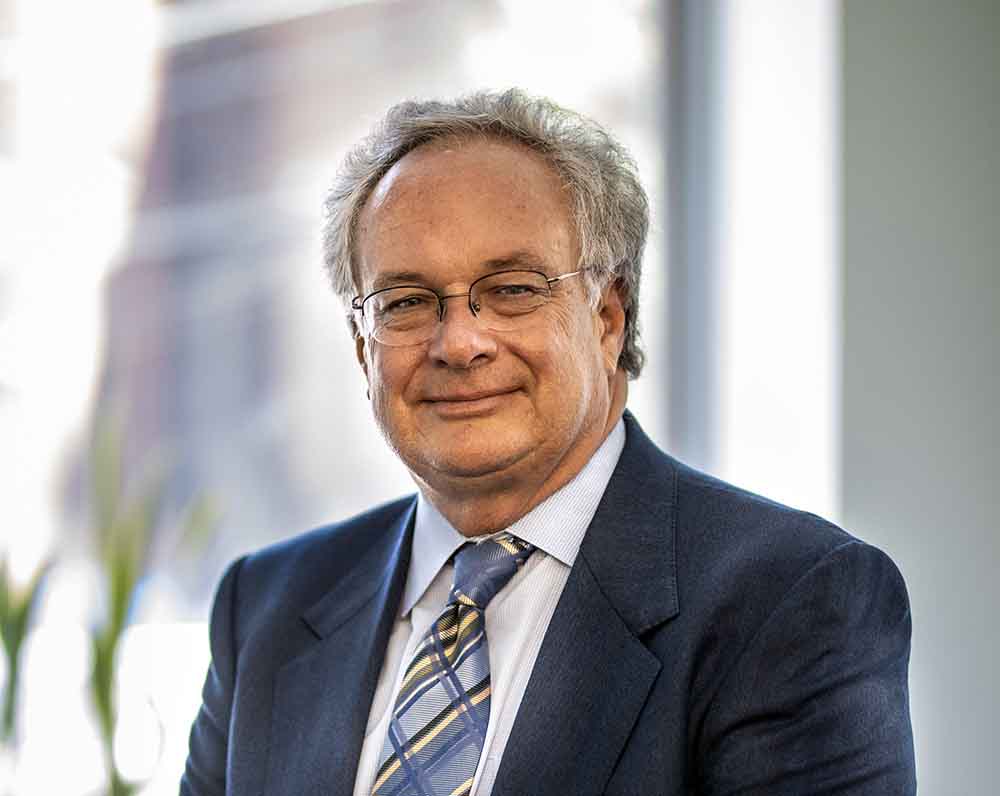Sherwin-Williams Is a Sleeper of the 100,000% Return Club
Sherwin-Williams has quietly carved out a massive return for shareholders over the years.


Editor's note: This is part four of a 13-part series about companies whose shares have amassed 100,000% returns for investors and the path taken to generate such impressive gains over the long term. See below for links to the other stocks in this series.
One interesting aspect of the 100,000% club are the sleepers. Sherwin-Williams (SHW) is a case in point. Who knew? But the company's business is one that when you stop to think about it, you realize there is paint on almost everything. Paint is everywhere and Sherwin-Williams sells a lot of it.
The company was founded in 1866 and over the course of nearly 160 years has penetrated every distribution channel there is: there are Sherwin-Williams stores for consumers, more stores for contractors, the company sells through big box stores, mom-and-pop hardware stores, chain hardware stores and through building supply warehouses and, of course, online.
From just $107.88 $24.99 for Kiplinger Personal Finance
Become a smarter, better informed investor. Subscribe from just $107.88 $24.99, plus get up to 4 Special Issues

Sign up for Kiplinger’s Free Newsletters
Profit and prosper with the best of expert advice on investing, taxes, retirement, personal finance and more - straight to your e-mail.
Profit and prosper with the best of expert advice - straight to your e-mail.
But what Sherwin-Williams has done very well is acquire other paint companies. It may be safe to say, and it's certainly arguable that growth through mergers and acquisitions has hurt more companies than it has helped. Witness Sprint, which acquired Nextel where integration issues and cultural clashes ultimately did in the company and it ultimately ran into the waiting arms of T-Mobile in 2020.
Hewlett-Packard, once the standard bearer of Silicon Valley, made missteps with Compaq (acquired for $25 billion in 2001), Palm (acquired for $1.2 billion in 2010) and Autonomy (acquired for $11.7 billion in 2010), which presaged the splitting of the company into two entities.
But not Sherwin-Williams. The company's foray into M&A started in 1872 when it acquired warehouses from Standard Oil. But since 2007, Sherwin-Williams has acquired 10 companies and, in the process, has assembled some of the best-known brands in the United States as well as in select overseas markets. These brands include Valspar, Minwax, Dutch Boy, Krylon and Thompson's Water Seal.
Since as far back as 2004, at least, Sherwin-Williams has never reported a loss. Quite the opposite, the company has grown revenues at approximately 7% annually and earnings per share at nearly 13%, almost double the growth in revenues.
How is Sherwin-Williams able to grow earnings almost twice as quickly as revenues? First, Sherwin-Williams has continued to squeeze costs. While the spread between what it takes to manufacture paint and its selling price, or the gross margin, has been fairly constant over the decades, Sherwin-Williams has been able to squeeze operating costs a little more each year and, in the process has raised their operating margin by nearly 60%.
While squeezing pennies out of its operating costs, Sherwin-Williams has also consistently bought back its own shares. In 2004, the company had 422 million shares outstanding. By midway through 2024, the share count was 252 million, a 40% reduction. The net effect of this decline is a constant upward movement in the earnings per share and a constant upward bias in the stock price, which is partly demonstrated by its 122,000% return since 1980.
But growth in share price is only one part of the return that shareholders reap. The other part of the total return are dividends. The dividend yield for Sherwin-Williams is modest, currently less than 1%. But it's a dividend grower, increasing its payout at an average annual rate of 13.4%.
Investors who bought 100 shares of SHW at the beginning of 2004 for an investment of $1,125 would now have 300 shares based on an April 2021 three-for-one stock split. With the cash payment for 2024 indicated at $2.86, that original $1,125 investment would be throwing off $860 ($2.86 x 300 shares) for a cash-on-cash yield of a stunning 87%. And that is likely to keep growing. Oh, and those shares purchased in 2004 for $1,125? They are now worth about $107,000.
Sherwin-Williams' dividend cash flow is not only strong, it's safe too and that adds to the price investors are willing to pay for SHW shares. Specifically, Sherwin-Williams dividend payout ratio, which is the amount of total earnings that get allocated to the dividend, has been steady at about 25%. By many yardsticks, this is low and that means even if earnings falter, even if they falter for a few years, the dividend is unlikely to be at risk.
Also laudable is a return on shareholder equity north of north of 70% which means the earnings not paid in dividends earn a good return when management reinvests them in the business. Combine all this, with modest debt levels means there will always be buyers for SHW, and given the performance, few sellers, driving a 120,000% return since 1980.
Note: This content first appeared in Louis Navellier's latest book, The Sacred Truths of Investing: Finding Growth Stocks that Will Make You Rich, which was published by John Wiley & Sons, Inc.
Related content
Profit and prosper with the best of Kiplinger's advice on investing, taxes, retirement, personal finance and much more. Delivered daily. Enter your email in the box and click Sign Me Up.

-
 The Best Vanguard Bond Funds to Buy
The Best Vanguard Bond Funds to BuyInvestors seeking the best Vanguard bond funds can pick between mutual funds and ETFs spanning maturities, credit qualities, tax treatment and geographies.
-
 Are You Afraid of an IRS Audit? 8 Ways to Beat Tax Audit Anxiety
Are You Afraid of an IRS Audit? 8 Ways to Beat Tax Audit AnxietyTax Season Tax audit anxiety is like a wild beast. Here’s how you can help tame it.
-
 The Kiplinger Letter's 10 Forecasts for 2026
The Kiplinger Letter's 10 Forecasts for 2026The Kiplinger Letter Here are some of the biggest events and trends in economics, politics and tech that will shape the new year.
-
 The Best Vanguard Bond Funds to Buy
The Best Vanguard Bond Funds to BuyInvestors seeking the best Vanguard bond funds can pick between mutual funds and ETFs spanning maturities, credit qualities, tax treatment and geographies.
-
 Feeling Too Guilty to Spend in Retirement? You Really Need to Get Over That
Feeling Too Guilty to Spend in Retirement? You Really Need to Get Over ThatAre you living below your means in retirement because you fear not having enough to leave to your kids? Here's how to get over that.
-
 Strategies for Women to Maximize Social Security Benefits
Strategies for Women to Maximize Social Security BenefitsWomen often are paid less than men and live longer, so it's critical that they know their Social Security options to ensure they claim what they're entitled to.
-
 Dow, S&P 500 Rise to New Closing Highs: Stock Market Today
Dow, S&P 500 Rise to New Closing Highs: Stock Market TodayWill President Donald Trump match his Monroe Doctrine gambit with a new Marshall Plan for Venezuela?
-
 This Is How Early Retirement Losses Can Dump You Into Financial Quicksand (Plus, Tips to Stay on Solid Ground)
This Is How Early Retirement Losses Can Dump You Into Financial Quicksand (Plus, Tips to Stay on Solid Ground)Sequence of returns — experiencing losses early on — can quickly deplete your savings, highlighting the need for strategies that prioritize income stability.
-
 How an Elder Law Attorney Can Help Protect Your Aging Parents From Financial Mistakes
How an Elder Law Attorney Can Help Protect Your Aging Parents From Financial MistakesIf you are worried about older family members or friends whose financial judgment is raising red flags, help is out there — from an elder law attorney.
-
 Q4 2025 Post-Mortem From an Investment Adviser: A Year of Resilience as Gold Shines and the U.S. Dollar Dives
Q4 2025 Post-Mortem From an Investment Adviser: A Year of Resilience as Gold Shines and the U.S. Dollar DivesFinancial pro Prem Patel shares his take on how markets performed in the fourth quarter of 2025, with an eye toward what investors should keep in mind for 2026.
-
 'Donroe Doctrine' Pumps Dow 594 Points: Stock Market Today
'Donroe Doctrine' Pumps Dow 594 Points: Stock Market TodayThe S&P 500 rallied but failed to turn the "Santa Claus Rally" indicator positive for 2026.